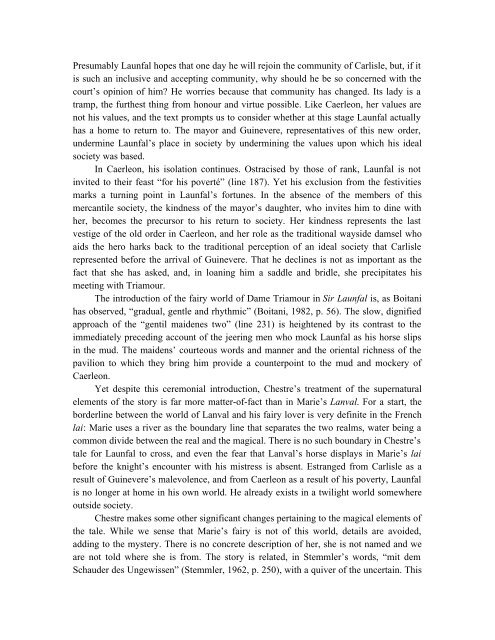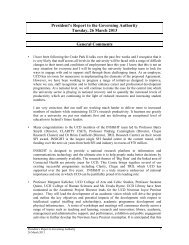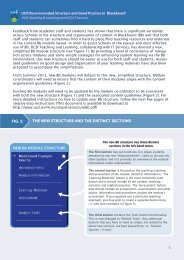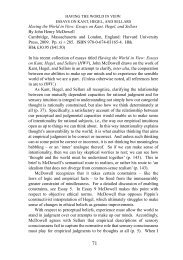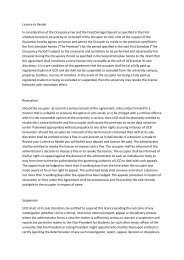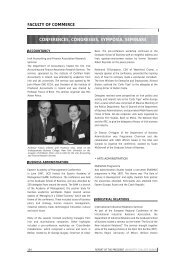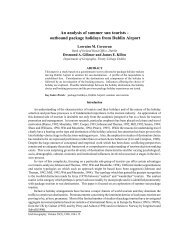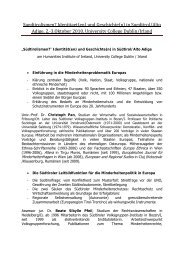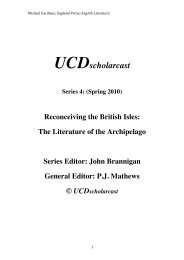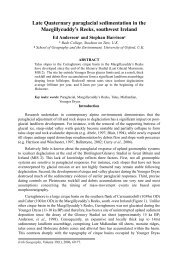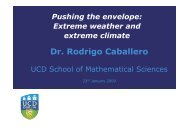Social Disorder and Discontent in Thomas Chestre's Sir Launfal
Social Disorder and Discontent in Thomas Chestre's Sir Launfal
Social Disorder and Discontent in Thomas Chestre's Sir Launfal
You also want an ePaper? Increase the reach of your titles
YUMPU automatically turns print PDFs into web optimized ePapers that Google loves.
Presumably <strong>Launfal</strong> hopes that one day he will rejo<strong>in</strong> the community of Carlisle, but, if it<br />
is such an <strong>in</strong>clusive <strong>and</strong> accept<strong>in</strong>g community, why should he be so concerned with the<br />
court’s op<strong>in</strong>ion of him? He worries because that community has changed. Its lady is a<br />
tramp, the furthest th<strong>in</strong>g from honour <strong>and</strong> virtue possible. Like Caerleon, her values are<br />
not his values, <strong>and</strong> the text prompts us to consider whether at this stage <strong>Launfal</strong> actually<br />
has a home to return to. The mayor <strong>and</strong> Gu<strong>in</strong>evere, representatives of this new order,<br />
underm<strong>in</strong>e <strong>Launfal</strong>’s place <strong>in</strong> society by underm<strong>in</strong><strong>in</strong>g the values upon which his ideal<br />
society was based.<br />
In Caerleon, his isolation cont<strong>in</strong>ues. Ostracised by those of rank, <strong>Launfal</strong> is not<br />
<strong>in</strong>vited to their feast “for his poverté” (l<strong>in</strong>e 187). Yet his exclusion from the festivities<br />
marks a turn<strong>in</strong>g po<strong>in</strong>t <strong>in</strong> <strong>Launfal</strong>’s fortunes. In the absence of the members of this<br />
mercantile society, the k<strong>in</strong>dness of the mayor’s daughter, who <strong>in</strong>vites him to d<strong>in</strong>e with<br />
her, becomes the precursor to his return to society. Her k<strong>in</strong>dness represents the last<br />
vestige of the old order <strong>in</strong> Caerleon, <strong>and</strong> her role as the traditional wayside damsel who<br />
aids the hero harks back to the traditional perception of an ideal society that Carlisle<br />
represented before the arrival of Gu<strong>in</strong>evere. That he decl<strong>in</strong>es is not as important as the<br />
fact that she has asked, <strong>and</strong>, <strong>in</strong> loan<strong>in</strong>g him a saddle <strong>and</strong> bridle, she precipitates his<br />
meet<strong>in</strong>g with Triamour.<br />
The <strong>in</strong>troduction of the fairy world of Dame Triamour <strong>in</strong> <strong>Sir</strong> <strong>Launfal</strong> is, as Boitani<br />
has observed, “gradual, gentle <strong>and</strong> rhythmic” (Boitani, 1982, p. 56). The slow, dignified<br />
approach of the “gentil maidenes two” (l<strong>in</strong>e 231) is heightened by its contrast to the<br />
immediately preced<strong>in</strong>g account of the jeer<strong>in</strong>g men who mock <strong>Launfal</strong> as his horse slips<br />
<strong>in</strong> the mud. The maidens’ courteous words <strong>and</strong> manner <strong>and</strong> the oriental richness of the<br />
pavilion to which they br<strong>in</strong>g him provide a counterpo<strong>in</strong>t to the mud <strong>and</strong> mockery of<br />
Caerleon.<br />
Yet despite this ceremonial <strong>in</strong>troduction, Chestre’s treatment of the supernatural<br />
elements of the story is far more matter-of-fact than <strong>in</strong> Marie’s Lanval. For a start, the<br />
borderl<strong>in</strong>e between the world of Lanval <strong>and</strong> his fairy lover is very def<strong>in</strong>ite <strong>in</strong> the French<br />
lai: Marie uses a river as the boundary l<strong>in</strong>e that separates the two realms, water be<strong>in</strong>g a<br />
common divide between the real <strong>and</strong> the magical. There is no such boundary <strong>in</strong> Chestre’s<br />
tale for <strong>Launfal</strong> to cross, <strong>and</strong> even the fear that Lanval’s horse displays <strong>in</strong> Marie’s lai<br />
before the knight’s encounter with his mistress is absent. Estranged from Carlisle as a<br />
result of Gu<strong>in</strong>evere’s malevolence, <strong>and</strong> from Caerleon as a result of his poverty, <strong>Launfal</strong><br />
is no longer at home <strong>in</strong> his own world. He already exists <strong>in</strong> a twilight world somewhere<br />
outside society.<br />
Chestre makes some other significant changes perta<strong>in</strong><strong>in</strong>g to the magical elements of<br />
the tale. While we sense that Marie’s fairy is not of this world, details are avoided,<br />
add<strong>in</strong>g to the mystery. There is no concrete description of her, she is not named <strong>and</strong> we<br />
are not told where she is from. The story is related, <strong>in</strong> Stemmler’s words, “mit dem<br />
Schauder des Ungewissen” (Stemmler, 1962, p. 250), with a quiver of the uncerta<strong>in</strong>. This


